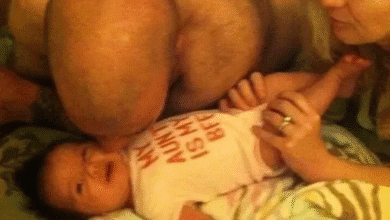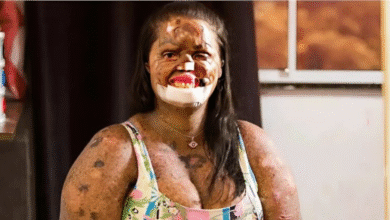The Art of Illusion: How Mirrored Images on Social Media Trick Our Perception

In today’s digital age, images circulate faster than ever, often challenging our understanding of what we see.
A striking example is a recent photo that has sparked both curiosity and debate. At first glance, the image appears to be suggestive, evoking interpretations that go beyond its original intent.
However, a closer look reveals the powerful interplay of photographic techniques and the quirks of human perception. (Refer to the image below.)
The Magic of Mirroring
Mirroring is a popular editing technique that creates symmetrical images by reflecting one half onto the other.
This method is frequently used in apps like Instagram, Snapchat, and various photo-editing platforms to add aesthetic appeal or create visual intrigue.
In this particular case, the photo seems to be the result of a mirrored capture—likely involving a hand or fingers—resulting in a composition that can be misinterpreted at first glance.
Pareidolia: Seeing Patterns Where There Are None.
One of the key reasons behind the initial shock value of this image is pareidolia. This psychological phenomenon occurs when the mind attempts to make sense of vague or ambiguous visual patterns by assigning familiar forms, such as faces, objects, or even body parts, where none exist.
When combined with the symmetry of a mirrored image, pareidolia can amplify suggestive shapes, making innocent details seem far more provocative than intended.
The Role of Social Media
The photo’s “Swipe Up” text at the bottom suggests that it might have been part of a social media story or post—a format known for its brevity and impact.
Social media platforms thrive on visual content that quickly grabs attention. In this environment, images that evoke surprise or humor—even unintentionally—can spread rapidly.
The interplay between technique and human perception often leads to viral moments where context is lost and interpretation takes over.
Misinterpretation vs. Intent
The image under discussion is a prime example of how context and presentation influence our interpretation of visual content.
While the mirrored composition creates an illusion that might resemble something risqué, it is, in essence, a playful manipulation of perspective.
The design harnesses both the technical aspects of digital photography and the natural tendencies of the human brain to recognize patterns, leading to a misinterpretation that is both fascinating and harmless.
Writing About the Phenomenon
For writers and analysts, this image serves as a compelling case study on several fronts:
- Optical Illusions and Digital Art: Explore how simple photographic techniques can yield complex visual outcomes.
- Psychological Insights: Discuss how pareidolia plays a role in our daily interactions with digital media.
- Social Media Dynamics: Examine the balance between aesthetic creativity and the potential for misinterpretation in fast-paced online environments.
- Cultural Impact: Reflect on how these visual phenomena influence our digital culture and contribute to conversations about media literacy.
Conclusion
The image, with its seemingly provocative appearance, is a reminder of the power of visual perception and digital manipulation.
By combining mirrored photography with the inherent quirks of the human brain, what might initially be seen as scandalous quickly transforms into an intriguing study of optical illusion and media dynamics.
As we continue to navigate the digital landscape, understanding these mechanisms becomes crucial—not only for content creators but also for the viewers who consume and interpret these visual messages every day.
In essence, the photo is a testament to the adage that “perception is reality,” demonstrating how context, technique, and psychology intertwine to shape our understanding of the world around us.






